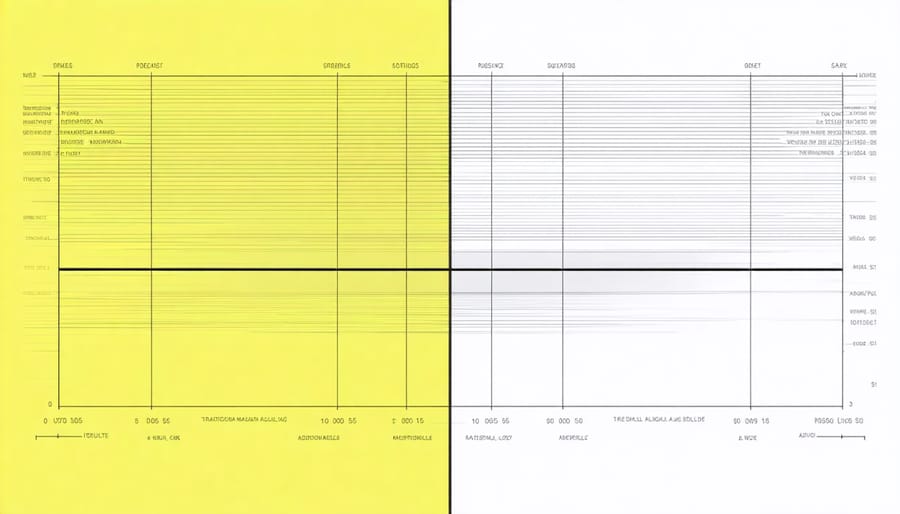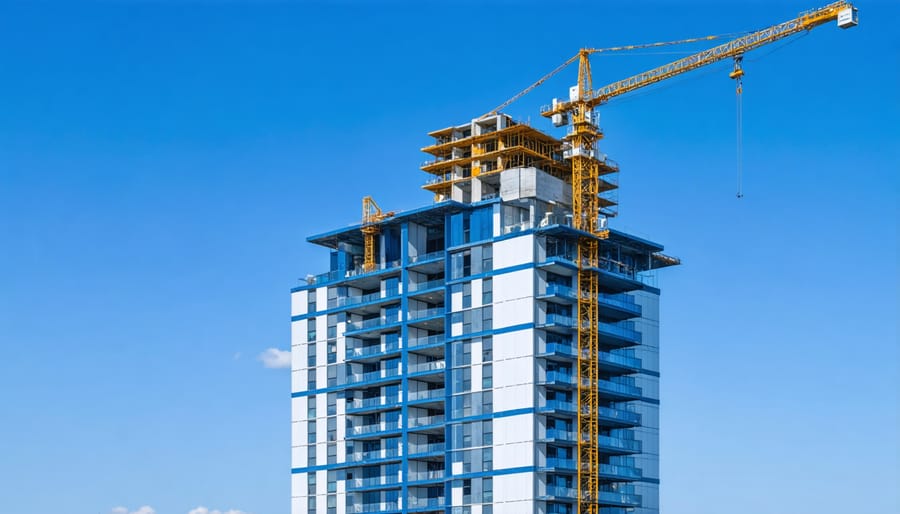Revolutionizing modern construction through advanced metallurgy, lightweight alloys represent the cornerstone of next-generation building materials. These engineered metals, combining strength-to-weight ratios previously thought impossible, are transforming how we approach structural design and implementation. Aluminum-lithium alloys, titanium-based composites, and magnesium alloys now enable architects and engineers to push traditional building limitations while reducing foundation loads by up to 40%.
Recent breakthroughs in precipitation-hardened aluminum alloys have yielded materials that maintain structural integrity at just one-third the weight of traditional steel, while new manufacturing processes have made these advanced materials increasingly cost-effective for large-scale projects. From high-rise curtain walls to seismic-resistant frameworks, these ultra-light metals are redefining construction possibilities across every sector of the industry.
As sustainability requirements tighten and material efficiency becomes paramount, lightweight alloys offer a compelling solution that meets both structural demands and environmental standards. Their superior corrosion resistance, reduced transportation costs, and faster installation times present a compelling business case for construction professionals seeking to optimize project outcomes while maintaining the highest engineering standards.
Latest Breakthroughs in Lightweight Construction Alloys
Advanced Aluminum-Lithium Alloys
Recent advancements in aluminum-lithium alloys have revolutionized lightweight construction materials, offering strength-to-weight ratios that surpass traditional aluminum alloys by up to 30%. Through advanced manufacturing techniques, these third-generation Al-Li alloys achieve densities as low as 2.5 g/cm³ while maintaining superior mechanical properties.
The latest Al-Li compositions, particularly the 2195 and 2198 series, demonstrate exceptional fatigue resistance and superior crack propagation properties. These alloys typically contain 1.0-2.5% lithium, with precise additions of copper, magnesium, and zirconium to enhance structural integrity. The reduced density coupled with improved elastic modulus makes them ideal for load-bearing applications in high-rise construction and long-span structures.
Field testing has shown that Al-Li alloys exhibit remarkable corrosion resistance when compared to conventional aluminum alloys, particularly in coastal environments. Their enhanced weldability and forming characteristics enable complex architectural designs while maintaining structural integrity. Construction projects utilizing these alloys have reported weight reductions of 15-20% in structural components without compromising safety factors.
The cost premium of Al-Li alloys, typically 20-30% higher than traditional aluminum alloys, is often offset by reduced material requirements, lower transportation costs, and decreased foundation loads. These factors, combined with their exceptional performance characteristics, make them increasingly attractive for ambitious architectural projects where weight reduction is crucial.

Magnesium-Based Composites
Magnesium-based composite materials represent a significant breakthrough in ultra-lightweight construction solutions, offering an impressive strength-to-weight ratio that surpasses traditional aluminum alloys by up to 33%. These innovative composites typically combine magnesium with carefully selected reinforcement materials, such as silicon carbide particles or carbon fibers, resulting in enhanced mechanical properties while maintaining the material’s inherent lightweight characteristics.
Recent developments in magnesium matrix composites (MMCs) have yielded remarkable improvements in corrosion resistance and fire safety, addressing historical concerns about magnesium’s reactivity. Advanced surface treatment technologies and the incorporation of rare earth elements have enabled these composites to achieve superior environmental stability, making them increasingly viable for exterior architectural applications.
In high-rise construction, magnesium-based composites are gaining traction for curtain wall systems and decorative facades, where weight reduction is crucial for structural efficiency. These materials demonstrate excellent vibration damping properties and thermal conductivity, contributing to improved building performance and energy efficiency.
The construction industry has particularly benefited from new manufacturing processes that allow for the cost-effective production of large-format magnesium composite panels. These innovations have made it possible to achieve weight reductions of up to 25% compared to aluminum alternatives, while maintaining necessary structural integrity and meeting stringent building codes.
Performance Characteristics and Benefits
Structural Integrity and Load Bearing
Modern lightweight alloys demonstrate remarkable structural integrity while maintaining minimal mass, achieving strength-to-weight ratios that surpass traditional construction materials. Aluminum-lithium alloys, for instance, exhibit yield strengths ranging from 370 to 490 MPa while being 10-15% lighter than conventional aluminum alloys. These properties make them particularly suitable for load-bearing applications in high-rise construction and infrastructure projects.
Testing data from independent laboratories confirms that titanium-based lightweight alloys can withstand compressive loads up to 900 MPa, providing exceptional structural support in critical applications. When reinforced with ceramic particles, these alloys demonstrate enhanced fatigue resistance, maintaining their structural integrity under cyclic loading conditions typical in bridge and building frameworks.
Magnesium-based alloys, despite being the lightest structural metals available, achieve impressive tensile strengths of 230-300 MPa through advanced processing techniques. Their load-bearing capacity is further improved through heat treatment and grain refinement, resulting in a 30% increase in mechanical properties while maintaining their ultralight characteristics.
Recent developments in scandium-modified aluminum alloys have produced materials with superior weldability and excellent resistance to stress corrosion cracking. These alloys maintain their structural integrity in demanding environments, with documented cases showing less than 2% degradation in strength properties after 10 years of service in coastal infrastructure projects.
For optimal structural performance, engineers must consider the specific stress distributions and loading patterns in their applications. Finite element analysis reveals that lightweight alloys, when properly engineered, can match or exceed the load-bearing capabilities of traditional steel while reducing the overall structural weight by up to 40%.

Corrosion Resistance and Durability
The corrosion resistance of lightweight alloys plays a crucial role in their long-term performance and maintenance requirements. Advanced aluminum-lithium alloys demonstrate exceptional resistance to atmospheric corrosion, making them particularly suitable for exposed structural elements. These alloys form a protective oxide layer that self-repairs when damaged, significantly reducing maintenance costs over the structure’s lifetime.
Magnesium alloys, while offering the lowest density among structural metals, require specific surface treatments to enhance their corrosion resistance. Modern coating technologies, including conversion coatings and anodizing processes, have substantially improved their durability in challenging environments. Recent developments in rare earth-based surface treatments have shown promising results, extending service life by up to 300% compared to traditional protection methods.
Titanium-based lightweight alloys exhibit superior corrosion resistance across diverse environmental conditions, including coastal areas with high salt exposure. Their exceptional durability stems from the spontaneous formation of a stable titanium dioxide film, eliminating the need for additional protective coatings in most applications.
Regular inspection intervals for lightweight alloy structures can be extended significantly compared to traditional materials, typically requiring major maintenance only every 15-20 years under normal conditions. However, proper design considerations must account for galvanic corrosion when these alloys contact dissimilar metals. Implementation of isolation techniques and careful material selection at connection points ensures optimal performance.
Environmental factors such as pollution levels, humidity, and temperature fluctuations can impact corrosion rates. Industry studies indicate that properly specified and installed lightweight alloys maintain their structural integrity for 50+ years with minimal intervention, making them increasingly attractive for long-term infrastructure projects.
Real-World Applications
High-Rise Construction Projects
The integration of lightweight alloys in high-rise construction has transformed modern construction methods, enabling architects and engineers to push the boundaries of structural design. The Burj Khalifa, currently the world’s tallest building, extensively utilizes aluminum-based alloys in its curtain wall system, reducing the overall structural load while maintaining exceptional durability and wind resistance.
In Shanghai Tower, the implementation of titanium-aluminum alloys in the building’s double-skin façade system proved instrumental in achieving its distinctive twisted form. The lightweight nature of these alloys allowed for a 24% reduction in structural steel requirements compared to conventional materials, while simultaneously enhancing the building’s seismic performance.
The Hudson Yards development in New York City showcases innovative applications of magnesium-aluminum alloys in its exterior cladding systems. These advanced materials deliver superior strength-to-weight ratios while providing excellent corrosion resistance in urban environments. The project’s engineers reported a 30% reduction in facade-related structural loads, enabling more efficient core design and foundation systems.
Recent developments in scandium-aluminum alloys have gained traction in super-tall structures, particularly in regions with extreme weather conditions. The Al-Hamra Tower in Kuwait exemplifies this trend, utilizing these advanced alloys in its structural framework to achieve greater height while minimizing foundation requirements. The material’s exceptional thermal stability and reduced thermal expansion characteristics have proven crucial in maintaining structural integrity under intense desert conditions.
These projects demonstrate how lightweight alloys continue to revolutionize vertical construction, offering architects and engineers unprecedented design flexibility while addressing critical structural and environmental challenges. The success of these implementations has led to increased adoption across the industry, particularly in projects where weight reduction and structural efficiency are paramount considerations.

Infrastructure Development
Lightweight alloys have revolutionized infrastructure development, particularly in bridge construction and public works projects where weight reduction is crucial for structural efficiency and longevity. Modern aluminum-lithium alloys, offering up to 30% weight reduction compared to traditional steel structures, have become increasingly prevalent in bridge deck systems and support structures.
The implementation of these advanced materials has demonstrated remarkable success in several high-profile projects. The Arvida Bridge in Quebec, Canada, showcases the durability of aluminum alloys in harsh weather conditions, maintaining structural integrity for over 70 years. Similarly, the deployment of magnesium-based alloys in pedestrian bridges has reduced installation costs by up to 40% while providing superior corrosion resistance.
Recent developments in titanium-aluminum composites have enabled engineers to design longer spans with reduced support requirements. These alloys exhibit exceptional strength-to-weight ratios, typically achieving tensile strengths of 1000-1200 MPa while maintaining density values below 4.5 g/cm³. This combination has proven particularly valuable in seismic zones, where reduced structural mass contributes to better performance during earthquakes.
Infrastructure professionals have noted significant advantages in maintenance schedules, with lightweight alloy structures requiring approximately 60% less frequent major repairs compared to conventional materials. The initial higher material costs are offset by reduced transportation expenses, lower foundation requirements, and extended service life, typically resulting in a 15-20% reduction in total project lifecycle costs.
Municipal authorities have increasingly specified lightweight alloys for urban infrastructure projects, including transit stations, pedestrian overpasses, and utility support structures. These applications benefit from rapid installation capabilities, with some projects reporting assembly time reductions of up to 50% compared to traditional steel construction methods.
When implementing lightweight alloys in infrastructure projects, engineers must consider specific design parameters, including thermal expansion coefficients and galvanic corrosion prevention. Successful integration often requires specialized connection details and protective coating systems to ensure optimal performance throughout the structure’s intended service life.
Future Outlook and Cost Considerations
The market for lightweight alloys is projected to experience significant growth, with experts forecasting a compound annual growth rate of 6.8% through 2030. This expansion is largely driven by the construction industry’s increasing adoption of innovative building technologies and sustainable materials. While initial material costs for lightweight alloys remain higher than traditional steel, ranging from 30-50% more expensive, the long-term benefits often justify the investment.
Cost-benefit analyses reveal that lightweight alloys can reduce overall project expenses through decreased transportation costs, reduced foundation requirements, and faster installation times. Industry experts estimate potential savings of 15-20% in total project costs when factoring in these operational efficiencies. Additionally, the durability and minimal maintenance requirements of these materials contribute to lower lifecycle costs.
Future developments in manufacturing processes, particularly in areas of powder metallurgy and advanced casting techniques, are expected to drive down production costs. Research institutions and manufacturers are currently developing new alloy compositions that promise even lighter weights while maintaining structural integrity. These innovations, coupled with increasing environmental regulations and sustainability requirements, suggest that lightweight alloys will become increasingly cost-competitive and prevalent in construction applications over the next decade.
In today’s evolving construction landscape, lightweight alloys represent a crucial advancement in building technology. Their exceptional strength-to-weight ratios, corrosion resistance, and versatility make them invaluable for modern construction projects. The integration of aluminum-lithium, magnesium, and titanium alloys offers construction professionals new possibilities for designing and executing ambitious architectural projects while meeting stringent safety and sustainability requirements. When selecting lightweight alloys for construction applications, professionals should carefully consider factors such as structural requirements, environmental conditions, budget constraints, and long-term maintenance needs. By understanding these materials’ properties and applications, construction teams can make informed decisions that optimize project outcomes and deliver innovative, durable structures that meet both current needs and future demands.

